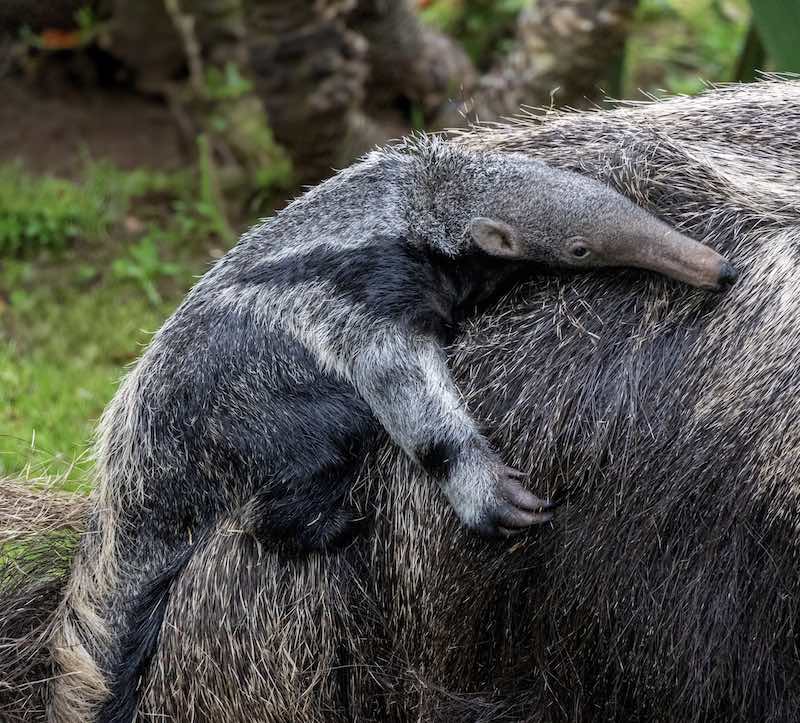 Cotswold Wildlife Park
Cotswold Wildlife ParkThese cute pictures show a rare giant anteater pup riding on its mother’s back, after being born at a UK wildlife park last week.
Named Antony, it was born to a mating pair of anteaters at Cotswold Wildlife Park in West Oxfordshire, England—and is the third breeding success for the parents since their arrival in 2010.
And the birth surprised caretakers just days before World Anteater Day, November 19.
The park is just one of only two collections in the UK to have bred giant anteaters in the last 12 months.
Senior mammal keeper Jenni Maxwell discovered the new pup during her morning keeper duties.
“Zeta very proudly sat up in her bed at 7am on Sunday morning and lifted her tail to show off her newborn pup.
“She is a brilliant mother, is very patient, and allows the youngster to climb onto her back before making her way out of bed.
 Anteater with new pup – Cotswold Wildlife Park
Anteater with new pup – Cotswold Wildlife Park“Antony has a bright white stripe down his back and his tail, which is rather unusual for Anteater pups.
“The pup will stay on her back for the first few months of his life, and he will align his stripe markings with hers to provide camouflage.”
LOOK: Polish Zoo Celebrates ‘Globally unprecedented’ Birth of 4 Critically-Endangered Sumatran Tigers
After a gestation period of around 190 days (27 weeks), the female gives birth to a single pup while standing up—and the young anteater which weighs around 2.9 pounds (1.3kg) immediately climbs onto her back.
 Senior Keeper Jenni Maxwell with Anteater and new pup – Cotswold Wildlife Park
Senior Keeper Jenni Maxwell with Anteater and new pup – Cotswold Wildlife ParkThe pups are born with a full coat of hair and adult-like markings, aligning with their mother’s camouflaging. Its mother will carry the baby on her back for six to nine months, until it’s almost half her size.
The young suckle for two to six months and become independent after roughly two years, or when the mother becomes pregnant again.
CUTENESS ALERT: Britain Celebrates Birth of Baby Bongo Antelope–with Fewer Than 100 Left on Earth
Giant anteaters are listed as “Vulnerable” on the IUCN Red List of Threatened Species and is one of the most threatened mammals of Central America, according to the International Union for the Conservation of Nature.
Generally solitary animals, except during the mating season, their population in the wild is estimated to be about 5,000 individuals, and is affected by habitat loss, road accidents, hunting, and wildfires.
But with the help of zoos, new babies are being born that boost overall numbers and raise awareness of their plight.
SHARE THIS CUTIE On Social Media for Animal Lovers in Your Life…
Source link

